A spray gun is shown in the figure where a piston pushes air out of a nozzle. A thin tube of uniform cross section is connected to the nozzle. The other end of the tube is in a small liquid container. As the piston pushes air through the nozzle, the liquid from the container rises into the nozzle and is sprayed out. For the spray gun shown, the radii of the piston and the nozzle are 20mm and 1mm respectively. The upper end of the container is open to the atmosphere.
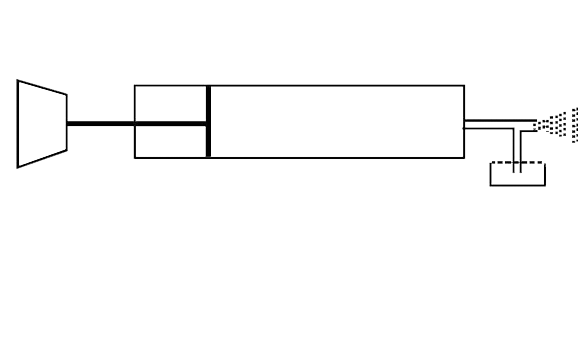
If the density of air is , and that of the liquid , then for a given piston speed the rate (volume per unit time) at which the liquid is sprayed will be proportional to
(a)
(b)
(c)
(d)
The correct Answer is:A
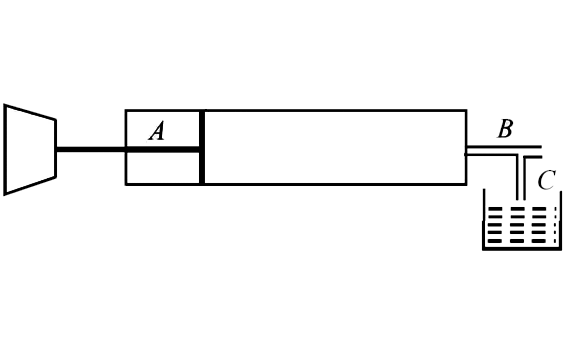
But
Volume flow rate
Topper's Solved these Questions
- MECHANICAL PROPERTIES OF MATTER AND FLUIDSBook:SUNIL BATRA (41 YEARS IITJEE PHYSICS)Chapter:MECHANICAL PROPERTIES OF MATTER AND FLUIDSExercise:Subjective Problems
Explore 1 Video
- LAWS OF MOTIONBook:SUNIL BATRA (41 YEARS IITJEE PHYSICS)Chapter:LAWS OF MOTIONExercise:JEE Main And Advanced
Explore 79 Videos
- MOMENTUM & IMPULSEBook:SUNIL BATRA (41 YEARS IITJEE PHYSICS)Chapter:MOMENTUM & IMPULSEExercise:JEE Main And Advanced
Explore 30 Videos
Similar Questions
_E01_216_Q01.png)
A syringe containing water is held horizontally with its nozzle at a height h above the ground as shown in fig the cross sectional areas of the piston and the nozzle are A and a respectively the piston is pushed with a constant speed v. Find the horizontal range R of the stream of water on the ground.
View SolutionThe figure bwlow indicates flow of water through a tube of uniform cross-section with a constant speed in the direction as shown by the arrows. On the tube, water exerts
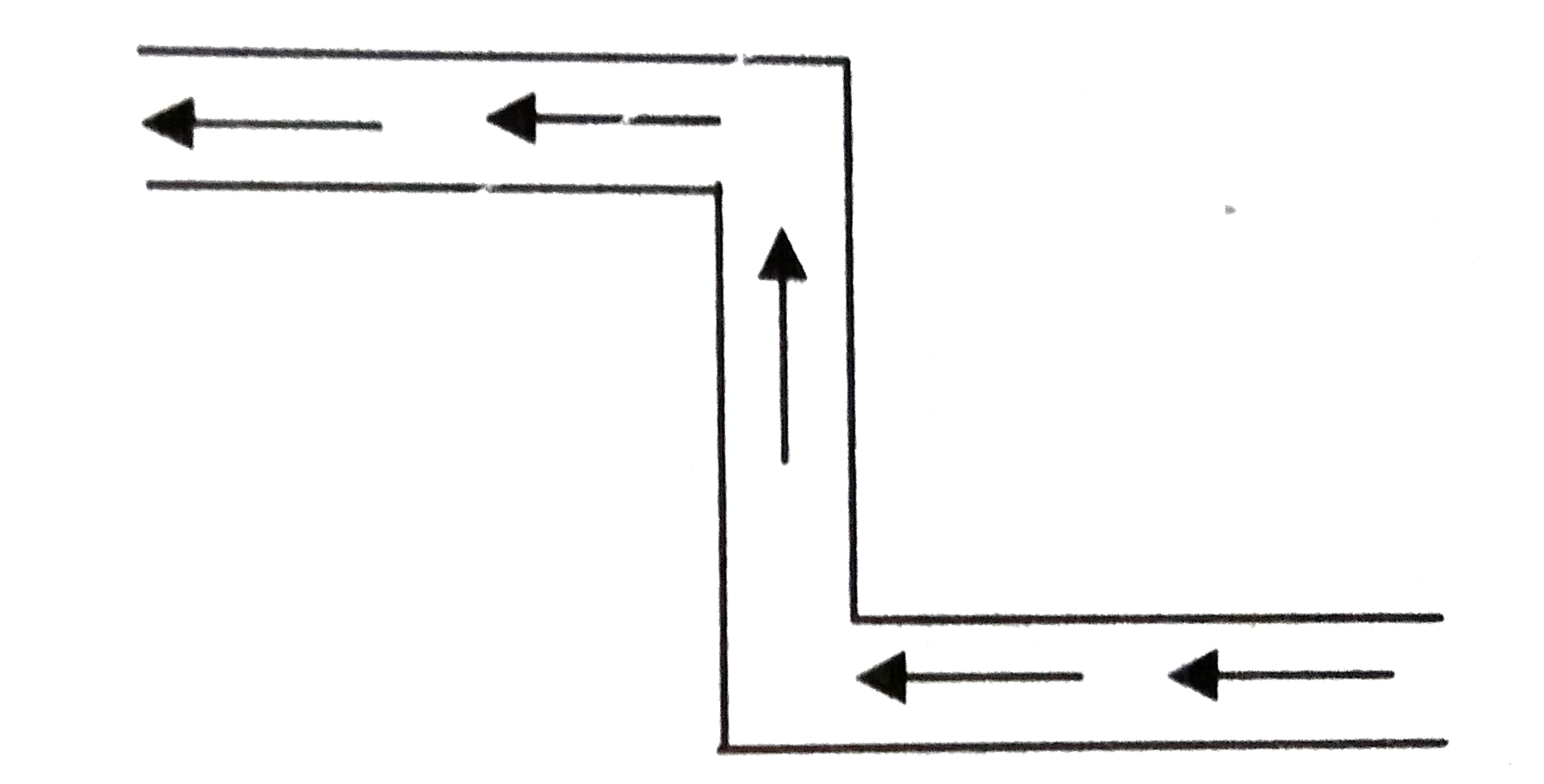
View Solution
Knowledge Check
A spray gun is shown in the figure where a piston pushes air out of a nozzle. A thin tube of uniform cross section is connected to the nozzle. The other end of the tube is in a small liquid container. As the piston pushes air through the nozzle, the liquid from the container rises into the nozzle and is sprayed out. For the spray gun shown, the radii of the piston and the nozzle are 20mm and 1mm respectively. The upper end of the container is open to the atmosphere.
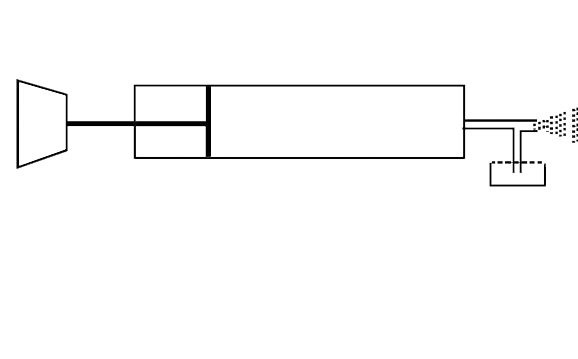
If the piston is pushed at a speed of 5mms−1, the air comes out of the nozzle with a speed ofA(a) 0.1ms−1B(b) 1ms−1C(c) 2ms−1D(d) 8ms−1If the smaller piston is pushed in through 6cm, how much does the longer piston move out?
A23cmB32cmC13cmD12cmA piston of a syringe pushes a liquid with a speed of 1 c, / sec . The radii of the syring tube and the needle are R = 1 cm and r = 0.5 mm respectively . The velocity of the liquid coming out of the needle is
 A2 cm/secB400 c,/secC10 cm/secDNone of these
A2 cm/secB400 c,/secC10 cm/secDNone of these
Figure shows a liquid being pushed out of a tube by pressing a piston. The area of cross section of the piston is 1.0 cm^2 and that of the tube at the outlet is 20mm2. If the piston is pushed at a speed of 2cms−1. What is the speed of the outgoing liquid?

View SolutionContainers A and B contain a liquid up to same height. They are connected by a tube (see figure). (a) If the liquid in container A is heated, in which direction will the liquid flow through the tube. (b) If the liquid in the container B is heated in which direction will the liquid flow through the tube? Assume that the containers do not expand on heating.
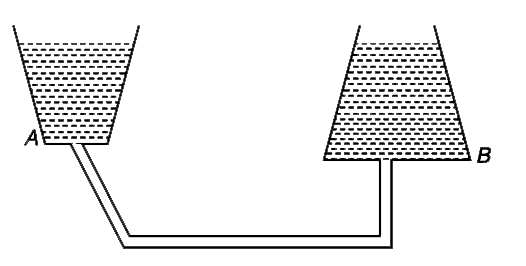
View SolutionA horizontal tube of uniform cross-sectional area A is bent in the form of U as shown in figure. If the liquid of density ρ enters and leaves the tube with velcity v, then the extermal force F requried to hold the bend stationary is
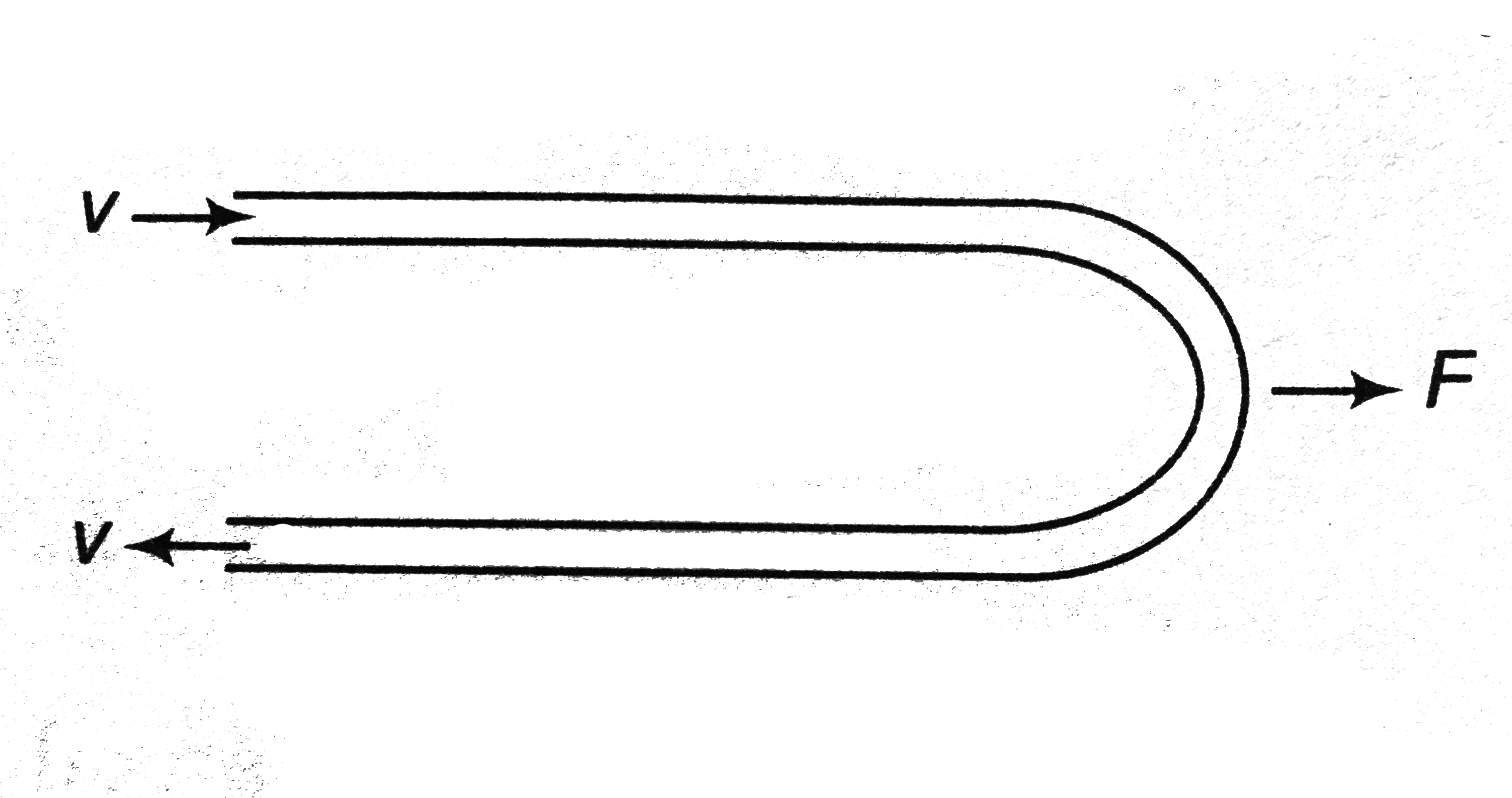
View SolutionAn engine pumps water continously through a hole. Peeds with which water pases through the hole nozzle is v and k is the mass per unit length of the water jet as it leaves the nozzle. Find the rate at which kinetic energy is eing imparted to the water.
View SolutionThe tube shown in figure is of unifrom corss-section. Liquid flows through it at a constant speed in the direction shown by arrows. Then the liquid exerts on the tube is:

View Solution